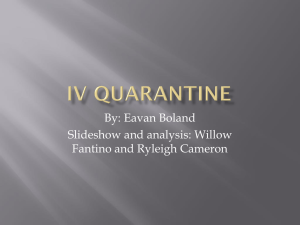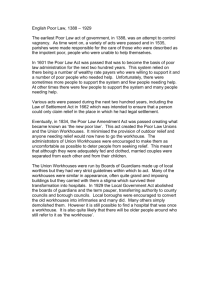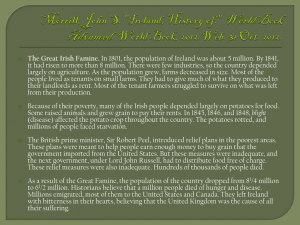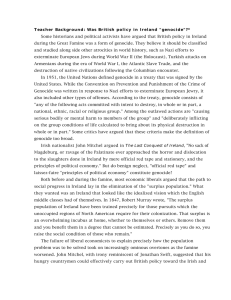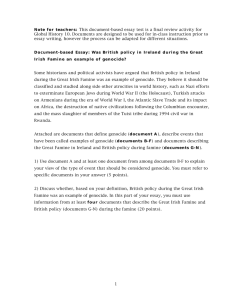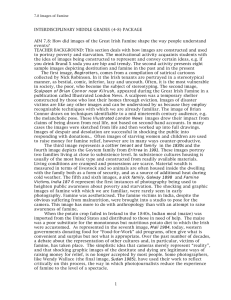Grade level: 10-12
advertisement
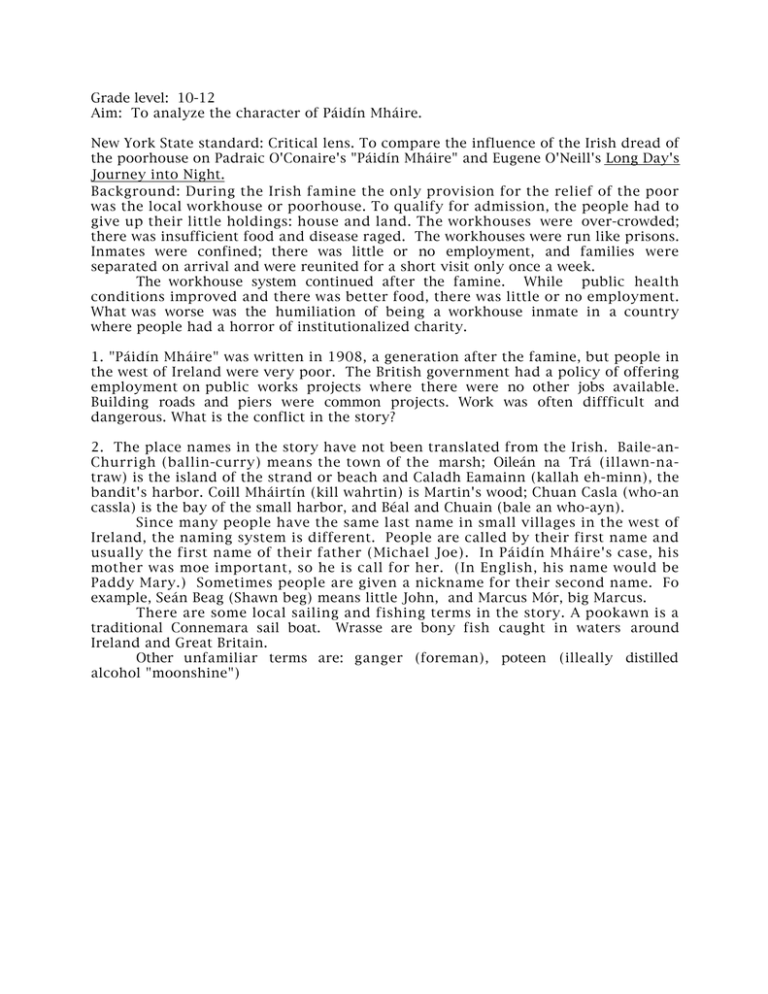
Grade level: 10-12 Aim: To analyze the character of Páidín Mháire. New York State standard: Critical lens. To compare the influence of the Irish dread of the poorhouse on Padraic O'Conaire's "Páidín Mháire" and Eugene O'Neill's Long Day's Journey into Night. Background: During the Irish famine the only provision for the relief of the poor was the local workhouse or poorhouse. To qualify for admission, the people had to give up their little holdings: house and land. The workhouses were over-crowded; there was insufficient food and disease raged. The workhouses were run like prisons. Inmates were confined; there was little or no employment, and families were separated on arrival and were reunited for a short visit only once a week. The workhouse system continued after the famine. While public health conditions improved and there was better food, there was little or no employment. What was worse was the humiliation of being a workhouse inmate in a country where people had a horror of institutionalized charity. 1. "Páidín Mháire" was written in 1908, a generation after the famine, but people in the west of Ireland were very poor. The British government had a policy of offering employment on public works projects where there were no other jobs available. Building roads and piers were common projects. Work was often diffficult and dangerous. What is the conflict in the story? 2. The place names in the story have not been translated from the Irish. Baile-anChurrigh (ballin-curry) means the town of the marsh; Oileán na Trá (illawn-natraw) is the island of the strand or beach and Caladh Eamainn (kallah eh-minn), the bandit's harbor. Coill Mháirtín (kill wahrtin) is Martin's wood; Chuan Casla (who-an cassla) is the bay of the small harbor, and Béal and Chuain (bale an who-ayn). Since many people have the same last name in small villages in the west of Ireland, the naming system is different. People are called by their first name and usually the first name of their father (Michael Joe). In Páidín Mháire's case, his mother was moe important, so he is call for her. (In English, his name would be Paddy Mary.) Sometimes people are given a nickname for their second name. Fo example, Seán Beag (Shawn beg) means little John, and Marcus Mór, big Marcus. There are some local sailing and fishing terms in the story. A pookawn is a traditional Connemara sail boat. Wrasse are bony fish caught in waters around Ireland and Great Britain. Other unfamiliar terms are: ganger (foreman), poteen (illeally distilled alcohol "moonshine")



